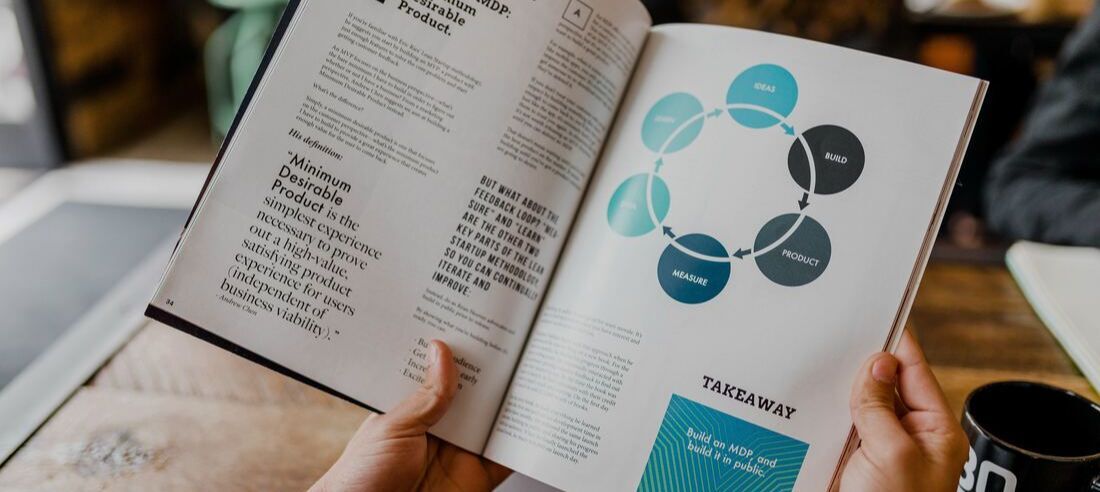|
Most people’s eyes glaze over when they think of business reports, especially annual reports. But it doesn't have to be like that.
Recently, reports have grown in depth and length as organisations are encouraged to be as transparent as possible. But as reports become more complex, it becomes more important to consider how to present the information in a way that engages readers and helps them to easily and quickly understand your content. Design is a large part of this, but how quick and easy the text is to read is also hugely important. That’s where plain language comes in. Most people feel a little worried about handing over their writing to someone else, especially someone outside their organisation.
You might wonder, “What will they think of my writing?” or “How will they know how I wanted to say it?” An editor is experienced in working with your ‘voice’. The goal of editing is to enhance communication, not detract from it. They will discuss the brief with you in detail, and make sure they understand the values and message of your organisation. Photo by ThisisEngineering RAEng on Unsplash What is jargon?As this is an article about using jargon and how to use it, I’d better explain what it is.
Jargon is the ‘special words or expressions used by a profession or group that are difficult for others to understand.’ (OED) Every industry has words that mean something to the people in that industry, and may not be known outside that industry. These words are used to simplify communications within that group and are often meaningless when taken out of context. Jargon is relative – the same words can be meaningful to one group of people, but mean something else, or nothing, to another group. In some industries jargon is useful for accurate and efficient communication. For example, the airline industry uses a phonetic alphabet to make sure words are understood correctly when it’s extremely important to get it right – such as in the control tower. And medical jargon is used to be as accurate as possible when a patient’s health or life is being discussed.  Writing is a creative process, which means it’s very personal.
When we write we may feel that it’s a reflection of how well we articulate ideas, how good we are at spelling and grammar, and our knowledge and intelligence. But we shouldn’t think about ourselves when we are writing in plain language, especially when we are providing important information. We need to think about who will read the text, and use empathy to understand what they need. What’s more frustrating than spending time writing and rewriting a detailed email with important information, only for the reader to miss the point or, worse, not read it at all? We know how it feels to receive too many emails. We all have inboxes with ‘to be read’ emails that sit there for months. Most of us don’t have hours to clear all our emails. We usually just skim through to get the gist of what’s in them. We want to find the key points easily and quickly to decide whether we need to read the details. The answer to getting your email read and actioned is to use the right structure so that the important information will be read and understood. It may be tempting to put all the background information in first to explain why you have written, but the reader may just skim the first bit, not understand the point, and hit delete. You won’t get the answer you want. Here are some tips to writing emails that get read. Do you work in a comms team and it’s always frantic? Or are you a copywriter and have more work than you can take on? Last-minute edits and proofreads need doing, but the next project has already arrived on your desk – with a tight deadline. Or you have several big projects on the go and your team just doesn’t have the time to spend on the nitty-gritty details. Or even, your team is great at the writing, but not so good at the details. But, it’s important that the copy is accurate and reflects well on your company. Consider outsourcing to an editor or proofreader to take the pressure off you and your team. Here are 5 reasons why this makes sense in today’s WFH culture. Communicating your message, your brand and your values accurately and effectively are vital to your business. Whether you write a business blog, a report, marketing material, emails, social media posts or an e-book, you want to communicate clearly and accurately. If you write content, and want to look professional and engage with your readers, working with an experienced editor can be beneficial to your business. And in a world of outsourcing and working from home, it’s easy to work with a qualified, experienced editor without having to hire someone full-time, whether it’s for a one-off project or as a long-term relationship. So, how can working with an editor help your business? Most organisations have an idea of how they want to be portrayed to clients or the public. They will have a brand and know what their values are.
With many people all creating writing on behalf of an organisation, including freelance copywriters or editors, it would be difficult to be consistent across all communications without a reference tool. Creating and using a writing style guide makes an organisation look professional, ensures clear communication, and creates a cohesive brand. A client may not consciously recognise that there is consistency in the writing style choices, but they will notice if there is not. I’m sure we've all experienced the feeling when we've spent hours creating a detailed report with important information only for the reader to skim it and put it aside. What if they missed an important point? How will they make a decision based on a quick skim read? Or you write a short report on an issue with well-thought-out recommendations, and the reception is not as positive as you expected. Most people don’t have spare hours to read each report that arrives on their desk. But they need to be able to find the important information quickly to make decisions. The answer is to use the right structure for your content so that the important information will be read and understood. Once they have the key information, the reader can then decide whether they will need to read the entire report to fill in the detail. |
Hi, I'm Marja!You'll find all my advice about creating professional, Categories
All
Previous PostsPlain language
Business editing New Zealand English series The editing process General editing Technical |








